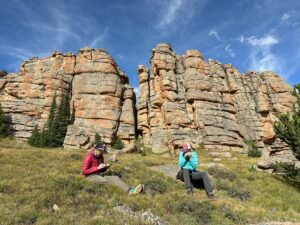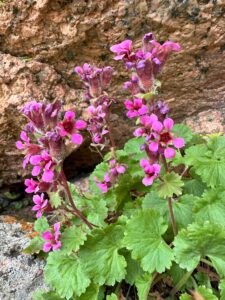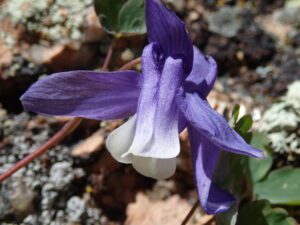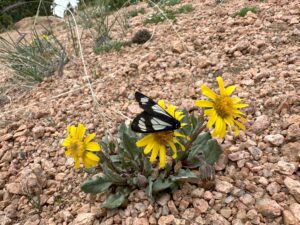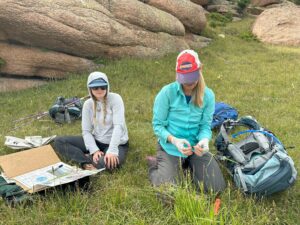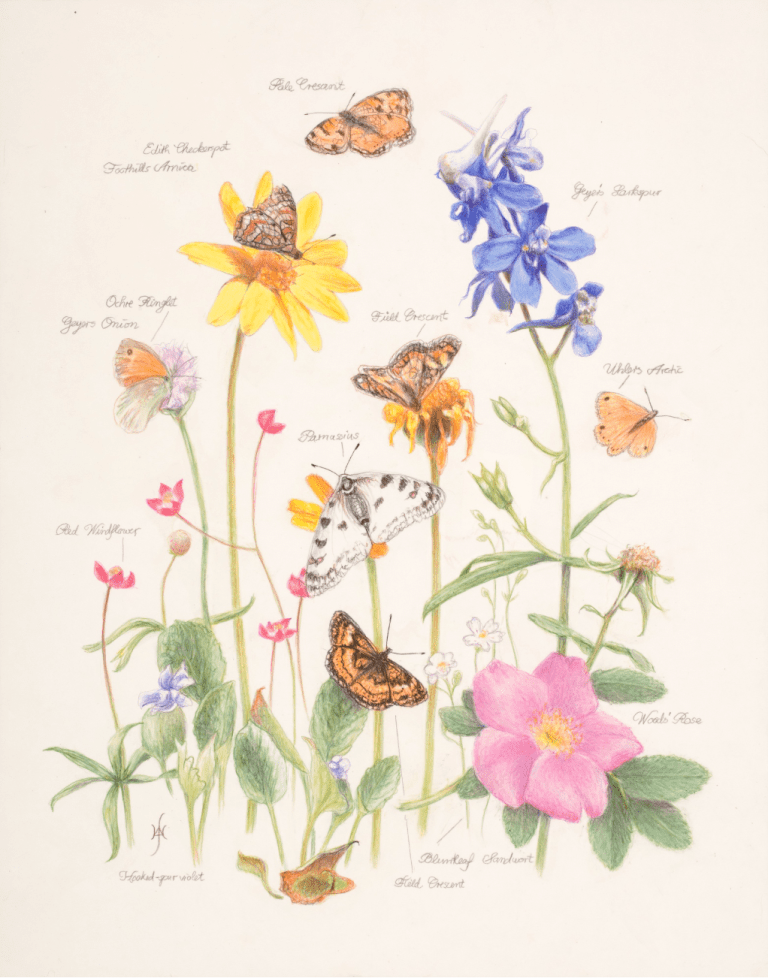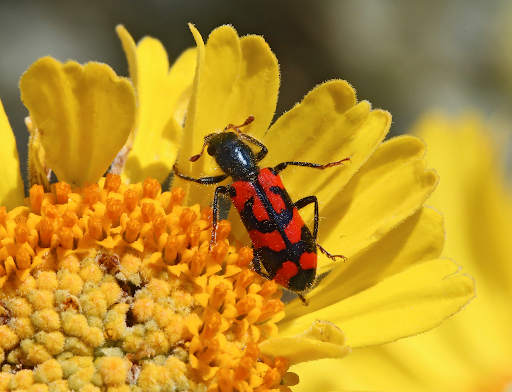Return to the Terryall Mountains
For the second year, our Conservation Team journeyed to the Tarryall Mountains with colleagues from Denver Botanic Gardens to document this under-surveyed and botanically rich area.
This foray was focused on gramminoids (grasses and sedges), which make up a significant portion of the biomass and diversity of the alpine but can be difficult to identify to species level in the field. Pikes Peak granite outcroppings give this area an unusual alpine environment, home to at least four rare plants! Until our team started collecting voucher specimens last year, this area only had a half-dozen collections of four species, and these were more than 20 years old! Over the last two years, we’ve made 176 herbarium collections as well as collected seed from nine species, and mapped the distribution of two rare species: Alumroot Brookfoam (Telesonix jamesii) and Rocky Mountain Blue Columbine (Aquilegia saximontana).
Enjoy a photo expedition of the conservation team’s journey to the Tarryall Mountains.
Alumroot Brookfoam (Telesonix jamesii) is a spectacular member of the Saxigragaceae family with bright pink flowers. This is an excellent example of a chasmophyte; that is, a rock-loving organism! It primarily grows on Pikes Peak granite, and has a limited range throughout Colorado and New Mexico.
Rocky Mountain Blue Columbine (Aquilegia saximontana) is a diminutive relative of our state flower, the Colorado Blue Columbine (Aquilegia coerulea). It is endemic to Colorado and only found in approximately 40 locations, more than half of which haven’t been surveyed in more than 20 years. Because of this dearth of data, as well as the threat of climate change and unscrupulous collectors, this taxon is rated G3, or Vulnerable, by NatureServe.
Dandelion Ragwort (Senecio taraxacoides) is another rare alpine plant occurring mainly in Colorado but with suspected range into New Mexico. Though related to our common Dandelion (Taraxacum officianale), this modest member of the Asteraceae (Sunflower) family is rated G3, or Vulnerable, by NatureServe, partly because it is an obligate alpine (growing exclusively above treeline) and very little is known about its distribution.
The team collects grasses for an herbarium specimen. Because grass morphology is notoriously difficult to discern, species in this group tend to be taken back to the herbarium and identified using microscopes.
A storm wreathed the unique Pikes Peak granite outcroppings of the Tarryalls in morning fog as our team made our ascent.



